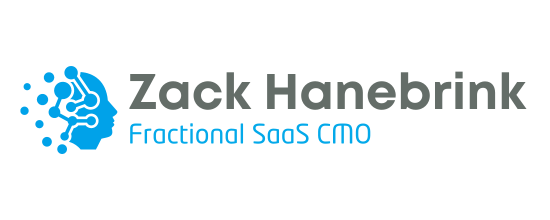
How Fractional CMOs Measure Success and KPIs in SaaS
Understanding Fractional CMOs in SaaS
Fractional Chief Marketing Officers (CMOs) are seasoned marketing professionals who provide strategic leadership to companies on a part-time or contractual basis. In the fast-paced world of Software-as-a-Service (SaaS), their expertise is indispensable. They bridge the gap between overarching marketing strategies and the unique demands of subscription-based business models.
Often brought in to tackle specific marketing challenges, optimize campaigns, or steer companies through growth phases, fractional CMOs offer flexibility and efficiency. They bring deep industry insights at a fraction of the cost of a full-time executive, making them an ideal solution for SaaS businesses aiming to scale effectively.
Why SaaS Companies Hire Fractional CMOs
Cost-Efficiency Meets Expertise
For SaaS startups and mid-sized businesses, hiring a full-time CMO may not be financially feasible. Fractional CMOs provide top-tier expertise without the expense of a full-time salary, enabling companies to get more value for their investment.
Scaling for Growth
As SaaS companies evolve, they face challenges like breaking into new markets, increasing customer retention, or optimizing marketing budgets. Fractional CMOs craft targeted strategies to address these issues, ensuring growth and scalability.
The Core Objectives of Fractional CMOs
Driving Revenue Growth
Revenue is the lifeblood of any SaaS business. Fractional CMOs focus on strategies that boost customer acquisition and retention, ensuring consistent and sustainable growth.
Building Brand Awareness
Standing out in the crowded SaaS market is essential. Fractional CMOs develop brand recognition through consistent messaging and impactful campaigns.
Optimizing Marketing Operations
From automating workflows to fostering collaboration across teams, fractional CMOs streamline operations to enhance overall efficiency.
Key Performance Indicators (KPIs) in SaaS Marketing
Tracking the right KPIs is crucial for SaaS success. Unlike other industries, SaaS KPIs focus on recurring revenue, user engagement, and retention. Here’s a breakdown of the key metrics fractional CMOs monitor:
Acquisition Metrics
- Customer Acquisition Cost (CAC): Fractional CMOs aim to reduce the cost of acquiring new customers without sacrificing lead quality.
- Marketing Qualified Leads (MQLs): These leads are more likely to convert into paying customers. Monitoring MQLs helps gauge marketing effectiveness.
- Lead Conversion Rates: This measures the percentage of leads that turn into customers, revealing how well marketing funnels perform.
Retention Metrics: The SaaS Lifeline
- Churn Rate: Reducing churn is critical in SaaS. Fractional CMOs focus on improving customer experiences and retention campaigns to lower churn rates.
- Customer Lifetime Value (CLTV): This metric represents the total revenue a customer is expected to generate, making it a cornerstone for growth strategies.
- Net Revenue Retention (NRR): By factoring in upsells and renewals, NRR measures revenue growth from existing customers, reflecting satisfaction and value.
Engagement Metrics
- Product Usage Frequency: Understanding how often customers use the product can highlight engagement levels and areas for improvement.
- Activation Rates: Measuring how quickly users realize the product’s value is vital for retention.
- Feature Adoption: Identifying which features users find most valuable guides product development and marketing efforts.
Revenue Growth Metrics
- Monthly Recurring Revenue (MRR): A key metric for tracking growth and subscription performance.
- Annual Recurring Revenue (ARR): This offers a broader perspective, aligning short-term strategies with long-term business objectives.
- Pipeline Velocity: By tracking how quickly prospects move through the sales funnel, fractional CMOs identify and address bottlenecks.
The Role of Benchmarks in Measuring Success
Fractional CMOs leverage industry benchmarks to set realistic goals and compare performance. By analyzing competitors, they pinpoint gaps and opportunities to outshine peers.
Marketing Campaign Metrics
- Return on Investment (ROI): A fundamental measure of campaign success and profitability.
- Click-Through Rates (CTR): Evaluates the effectiveness of ads, emails, and landing pages in driving engagement.
- Cost Per Lead (CPL): Reducing CPL while maintaining lead quality is a key objective for fractional CMOs.
Tools of the Trade
Fractional CMOs rely on tools like Salesforce, HubSpot, Mixpanel, and Google Analytics for real-time tracking and predictive analytics. These platforms provide actionable insights and help in crafting data-driven strategies.
Aligning KPIs with Business Goals
Success starts with aligning KPIs to broader business objectives. Fractional CMOs collaborate with leadership to ensure the metrics they track reflect meaningful outcomes for the company.
Overcoming Challenges in Measuring SaaS KPIs
Measuring KPIs in SaaS comes with its own set of challenges, such as data attribution complexities and maintaining accuracy. Fractional CMOs tackle these issues by building reliable systems and employing advanced analytics tools.
Success Stories of Fractional CMOs in SaaS
- Boosting MRR: A SaaS company achieved a 25% MRR increase in six months through targeted acquisition campaigns.
- Reducing Churn: Personalized onboarding and proactive support reduced churn rates by 15%.
- Optimizing CAC: Refining target personas and ad spend led to a 20% reduction in CAC.
FAQs
Who is a Fractional CMO?
A part-time marketing executive who offers high-level strategy and hands-on execution tailored to a company’s needs.
How do they measure success in SaaS?
By tracking KPIs such as CAC, MRR, NRR, and churn to align marketing efforts with company goals.
What tools do they use?
Popular platforms include Salesforce, HubSpot, Tableau, and Google Analytics.
Fractional CMOs are not just part-time executives; they’re strategic partners who deliver results. By focusing on the right metrics and aligning them with business goals, they empower SaaS companies to thrive in an increasingly competitive landscape.
